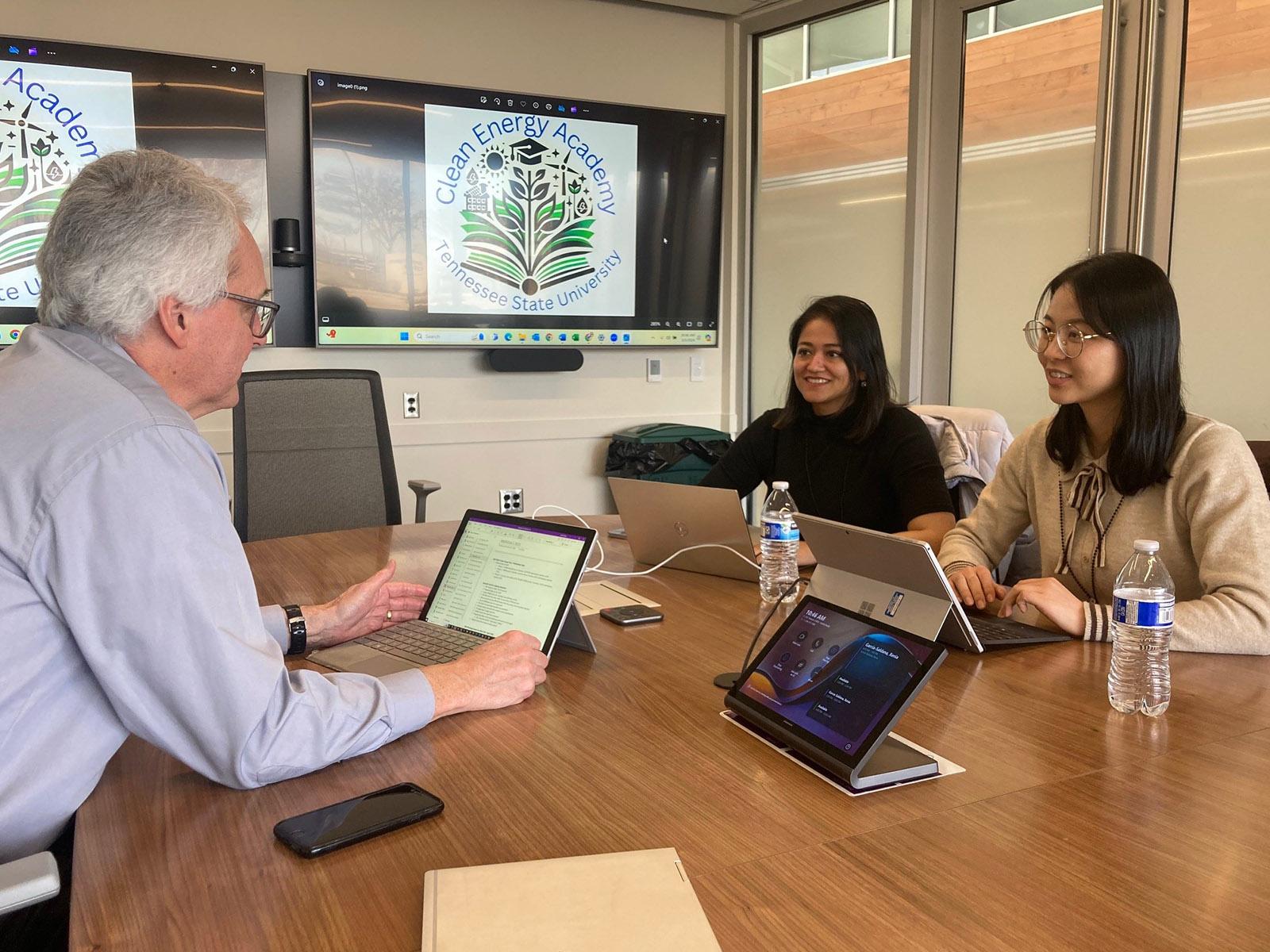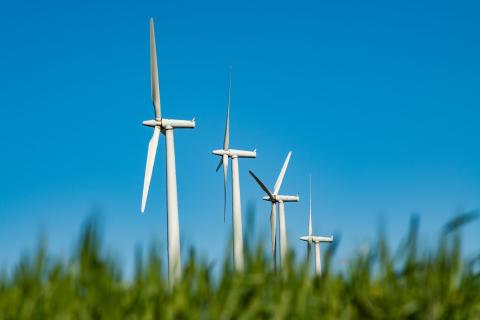University, PNNL Advance New Concepts for Clean Energy Workforce
Tennessee State University and PNNL collaborate to strengthen academics and workforce development in the clean energy system sector

From left, Bob Davis (PNNL), Sagnika Ghosh (TSU), and Zufen Wang (TSU), met recently at PNNL to discuss TSU’s plans related to clean energy academics, training, and research.
(Photo by Tim Ledbetter | Pacific Northwest National Laboratory)
Tennessee State University (TSU), with assistance from Pacific Northwest National Laboratory (PNNL), has garnered federal funding for an academy to help prepare the future clean energy workforce.
As envisioned, the TSU Clean Energy Academy (CEA) initially will serve the university’s students who are interested in course work and practical field experience related to clean energy systems.

“The academy’s overarching goal is to support a knowledgeable, skilled, diverse workforce for the clean energy industry in the United States,” said Sagnika Ghosh, a TSU assistant professor. “Through the prism of clean energy,” she added, “the academy will address disciplines that include power generation, transmission and distribution, energy-efficient building systems, and the human and societal dimensions.”
The university eventually hopes to broaden the CEA program to embrace professionals who already work in traditional power system settings—such as utilities and the electrical power grid—but want to gain more expertise in clean energy systems. This target audience would also include the energy-efficient buildings workforce and workers engaged in public policy and related clean energy areas.
TSU, located in Nashville, is among America’s Historically Black Colleges and Universities (HBCUs). The CEA funding—$100,000 to start—was awarded by the Department of Energy (DOE) HBCU Clean Energy Education Prize program.
Putting the CEA pieces together
The academy intends to include a level of flexibility in terms of costs and requirements for participating students. Ghosh noted that not everyone needs a four-year degree, or any degree necessarily, to participate in the clean energy workforce, and the goal is to structure the academy with those realities in mind.
The CEA also hopes to feature real-life, hands-on learning opportunities through collaborations with utilities, national laboratories, and others.
Ghosh and her colleague, Zufen Wang, also a TSU assistant professor, are leading the CEA endeavor, with assistance from Bob Davis, chief lighting research engineer at PNNL. Bin Shui, a research professor at TSU, is advising on the human and societal aspects of clean energy systems.
Additional organizations plan to serve as advisory resources to the CEA effort. They include the Center for Energy Workforce Development, EVNoire, the Nashville Electric Service, Oak Ridge National Laboratory, P2S Inc., SESCO Lighting, and the Tennessee Valley Authority.
The university will need to demonstrate regular progress on the CEA to obtain additional phases of DOE funding, which could collectively bring TSU more than $1 million.
Symbiotic relationship forms between TSU and PNNL
Although PNNL is not a funded partner in the CEA project, Davis served as a resource to the TSU team in developing the successful proposal and will continue to offer his expertise as the academy moves forward. Davis previously developed a program for lighting science at the University of Colorado Boulder that’s similar to the CEA concept.
Wang said Davis’s expertise has been crucial. “Bob provides his work experience and national laboratory experience, which has helped guide us as we move forward on the CEA,” Wang noted.
Davis’s work with TSU is coordinated via a joint appointment agreement established in March 2022. PNNL leadership championed the joint appointment approach as the best way to partner with the university in areas of building efficiency and power grid research, benefiting both institutions. In addition to Davis’s assistance, which includes teaching a two-course sequence in architectural engineering at TSU, other researchers at PNNL have served as guest lecturers at the university.
Davis noted that interactions with the university led to the recent hiring of a TSU graduate to work at PNNL on energy-efficient buildings topics.
More good news ahead?
Davis has been partnering with Ghosh and Wang to develop a National Science Foundation (NSF) proposal for a separate effort. Whereas the DOE prize focuses on education, the NSF program supports pursuit of excellence in research at HBCU institutions.
If the proposal is successful, TSU would use the resulting funds to strengthen research programs at TSU, primarily at the intersection of the grid and efficient buildings. The planned research agenda also would examine effective methodologies to improve power systems for remote or disadvantaged communities.
The proposal is due in October. Ghosh, Wang, and Davis will spend the summer and fall preparing a plan for submission. The NSF has provided a $100,000 planning grant to help with proposal development costs.
Published: April 18, 2024